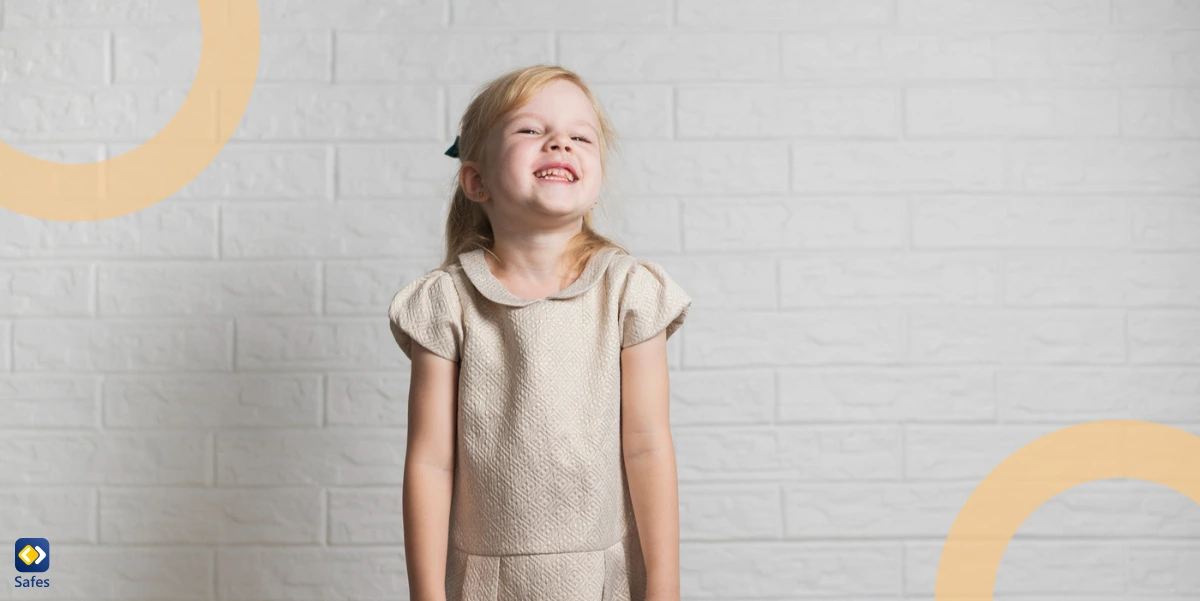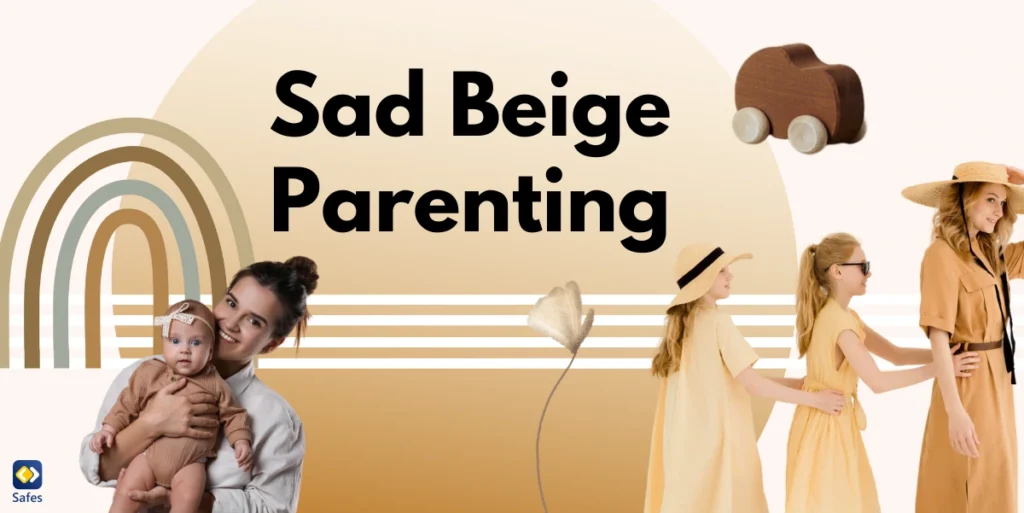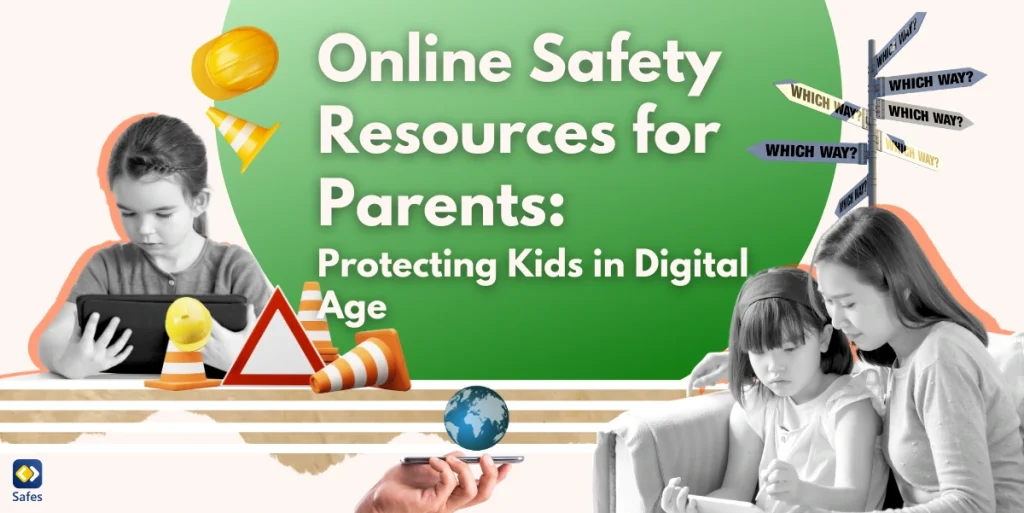In recent years, the term “Sad Beige Baby” has emerged as part of a broader cultural discussion surrounding modern parenting, particularly in relation to children’s clothing and the color schemes chosen by parents for their babies. While it may sound like an innocuous trend, the rise of neutral and muted colors like beige, gray, and off-white in baby clothing has sparked a deeper conversation about modern parenting practices and the potential implications for child development and family dynamics. Alongside this, the term “Sad Beige Parenting” has emerged to describe a more emotionally detached or disengaged approach to parenting, which may also be reflected in the muted, minimalist choices for a child’s wardrobe.
Download and Start Your Free Trial of the Safes Parental Control App
This blog post explores the meaning of “Sad Beige Baby” and “Sad Beige Parenting,” why they’ve gained attention, and the broader implications these trends have on parenting and child development. We’ll also take a look at the possible reasons behind the rise of neutral, beige tones in children’s fashion and explore what this means for parents and their children.
What is Sad Beige Parenting’s Meaning?
The term “Sad Beige Baby” has recently gained popularity, especially on platforms like TikTok and Instagram, to describe the sad beige parenting trend in which parents choose neutral, muted colors—like beige, gray, or pastel tones—over more vibrant, stimulating colors for their babies’ clothing. While there’s nothing inherently wrong with these color choices, they’ve been labeled as “sad” because they are seen as emotionally subdued and, at times, devoid of the lively, energetic hues traditionally associated with baby clothes. Bright primary colors such as red, yellow, or blue are often considered more stimulating for babies, while neutral tones can be seen as less engaging and even uninspiring.
Parents who choose these neutral tones might do so for a variety of reasons, from aesthetic preferences to a desire for minimalism in their children’s wardrobes. Some may find comfort in the simplicity and clean lines that beige and other muted colors offer, while others may view these colors as more gender-neutral or timeless. However, some critics of beige parenting argue that these color choices may reflect a deeper cultural shift towards less emotional engagement and an aesthetic of neutrality in parenting and are a sign of bad parenting.
This aesthetic choice has sparked discussions about how it may inadvertently influence a child’s emotional development and how parents’ decisions in style may reflect broader parenting practices. For instance, while neutral tones are a personal preference for many sad beige moms, they may lack the vibrancy and stimulation that more colorful clothing could provide, potentially affecting the baby’s sensory development. It’s important to note, however, that clothing alone is unlikely to play a significant role in a child’s development, but when paired with the broader Sad Beige Parenting phenomenon, it might be indicative of a more detached, emotionally drained parenting approach.
The Impact of Sad Beige Baby on Child Development
Though Sad Beige Baby may be seen as a simple fashion choice, its connection to Sad Beige Parenting suggests that it could have broader implications for a child’s emotional and cognitive development. Children rely on stimulation from their environment to develop crucial skills such as language, emotional regulation, and social interaction. Color plays an important role in early development, with bright and contrasting colors being particularly stimulating for infants. The absence of such stimulating colors may impact how babies engage with their surroundings.
Babies are attracted to bright colors because their developing brains are wired to seek out visual stimuli. According to research, babies begin to distinguish between colors around 2 to 3 months of age, and colors like red, yellow, and blue are particularly eye-catching. Bright and contrasting colors encourage babies to look, focus, and engage with their environment, promoting sensory development and attention span. Choosing neutral tones for baby clothing, such as beige or pale gray, could reduce the visual stimulation that contributes to cognitive development.
The impact of these color choices on a baby’s emotional development is still debated. While clothing alone is not likely to make or break a child’s developmental milestones, the broader implications of a minimalist parenting approach could influence how emotionally connected a child feels to their caregivers. Parents who are emotionally disengaged may not prioritize the importance of color and sensory stimulation, leading to an emotionally “flat” environment for the child. Over time, this could contribute to a child’s difficulty in forming secure attachments or feeling emotionally nurtured.
However, it’s important to note that every family is different, and some children may thrive in neutral, minimalist environments that provide a calm and serene atmosphere. Ultimately, the choice of clothing should be one of many factors to consider when looking at a child’s overall development, and it’s important for parents to balance their aesthetic preferences with an awareness of their child’s emotional and sensory needs. We are putting aside concerns about the negative effects of social media on parenting for now.

How Sad Beige Parenting May Affect Parents
Sad Beige Parenting is not just about the choices parents make for their children—it also reflects how parents are feeling. Many parents who engage in this style of parenting may feel overwhelmed, disconnected, or simply “tired” of the pressures of modern family life. With the rise of work-from-home culture, social media pressures, and the relentless pace of daily life, it’s easy for parents to lose sight of what’s important: emotional connection.
Sad Beige Parenting is often a coping mechanism for parents who are experiencing burnout. Rather than engaging with their children, parents may become passive, focusing only on fulfilling basic needs like feeding, dressing, and transporting their kids without putting much emotional energy into their actions. This can result in a lack of meaningful communication and bonding, which is essential for a child’s development. If this behavior becomes habitual, it can be difficult for parents to reconnect with their children emotionally, leading to a cycle of disengagement.
Parents who practice Sad Beige Parenting may find themselves struggling with feelings of inadequacy and guilt. They may feel that they are failing to live up to societal standards of “perfect” parenting, and this can contribute to further emotional exhaustion. As a result, these parents might turn to neutral colors in an attempt to simplify their lives, opting for baby clothing choices that reflect the minimalist lifestyle they long for. However, these clothing choices might inadvertently signal a deeper emotional disengagement that extends beyond the clothing itself.
The effects of Sad Beige Parenting on parents are also compounded by societal expectations. The constant need to balance work, home life, and personal well-being can overwhelm parents, especially mothers, who often bear the brunt of household responsibilities. In this context, the trend toward minimalist, neutral tones can feel like one of the few areas where parents can regain control, but it is important to understand the emotional implications that accompany this style of parenting.
Breaking the Cycle of Sad Beige Parenting
The key to breaking free from Sad Beige Parenting is recognizing the signs of burnout and engaging in practices that help parents reconnect emotionally with their children. It’s important to address the root causes of emotional exhaustion, which may include seeking support from mental health professionals, building stronger social networks, or simply taking time for self-care. When parents feel emotionally fulfilled, they are better able to invest in their children’s emotional and developmental needs.
One way to break the cycle is to create a home environment that prioritizes emotional engagement and connection. This can be as simple as spending more quality time with your children, engaging in creative activities like painting, playing, or reading, and making a conscious effort to show affection and empathy. Parents can also start paying more attention to the sensory aspects of their children’s environment, including the colors they surround themselves with.
Conclusion
Ultimately, Sad Beige Parenting is a reflection of the pressures that modern parents face, but it’s also a call to action to re-engage with the joys of parenthood. Choosing vibrant colors, both in clothing and in daily interactions, can be a small but significant step toward creating a more emotionally fulfilling and connected family environment.
If you’re feeling overwhelmed by the pressures of modern parenting and need help re-engaging emotionally with your children, Safes Family can help. Start your free trial today on iOS and Android and take the first step toward creating a more connected, engaged, and colorful parenting experience for you and your little ones.
Your Child’s Online Safety Starts Here
Every parent today needs a solution to manage screen time and keep their child safe online.
Without the right tools, digital risks and excessive screen time can impact children's well-being. Safes helps parents set healthy boundaries, monitor activity, and protect kids from online dangers—all with an easy-to-use app.
Take control of your child’s digital world. Learn more about Safes or download the app to start your free trial today!




